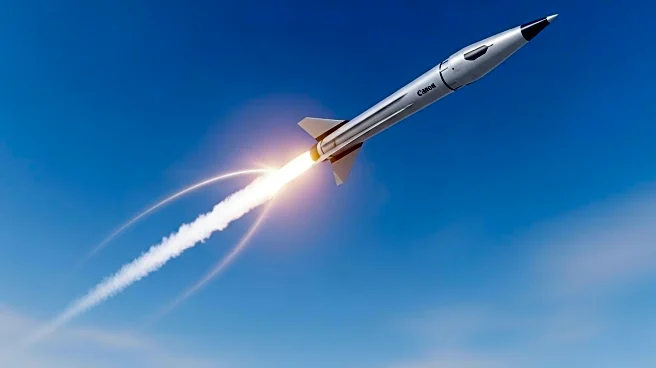What is the story about?
What's Happening?
Rocket Lab is set to launch a critical test flight for the U.S. military's hypersonic research using its Hypersonic Accelerator Suborbital Test Electron (HASTE) vehicle. The launch is scheduled for September 30, 2025, from Launch Complex 2 at Wallops Flight Facility in Virginia. The HASTE vehicle, a modified version of Rocket Lab's Electron rocket, is designed to provide high-cadence, affordable test opportunities for hypersonic technology, which involves flight at speeds of Mach 5 or greater. This mission aims to test advanced hardware such as air-breathing engines and thermal protection systems, crucial for developing U.S. military hypersonic weapons. The payload for this mission remains classified.
Why It's Important?
The advancement of hypersonic technology is a significant focus for the U.S. military, as it seeks to develop weapons capable of traveling at extremely high speeds, which can evade current missile defense systems. The HASTE vehicle's ability to simulate real weapon flight profiles offers a strategic advantage, allowing for more precise testing and development of hypersonic capabilities. This launch represents a step forward in maintaining U.S. military competitiveness in the field of advanced weaponry, potentially impacting defense strategies and international military dynamics.
What's Next?
Following the HASTE launch, further developments in hypersonic technology are anticipated, with continued testing and refinement of systems. The U.S. military is likely to increase investment in hypersonic research, potentially leading to new contracts and collaborations with aerospace companies. The success of this mission could accelerate the timeline for deploying operational hypersonic weapons, influencing future defense policies and military readiness.
Beyond the Headlines
The development of hypersonic weapons raises ethical and strategic questions, particularly regarding arms races and global security. As countries like China and Russia also pursue hypersonic capabilities, there is a potential for increased geopolitical tensions. The U.S. must navigate these challenges while ensuring that advancements in hypersonic technology do not destabilize international relations or lead to unintended escalations.
AI Generated Content
Do you find this article useful?














